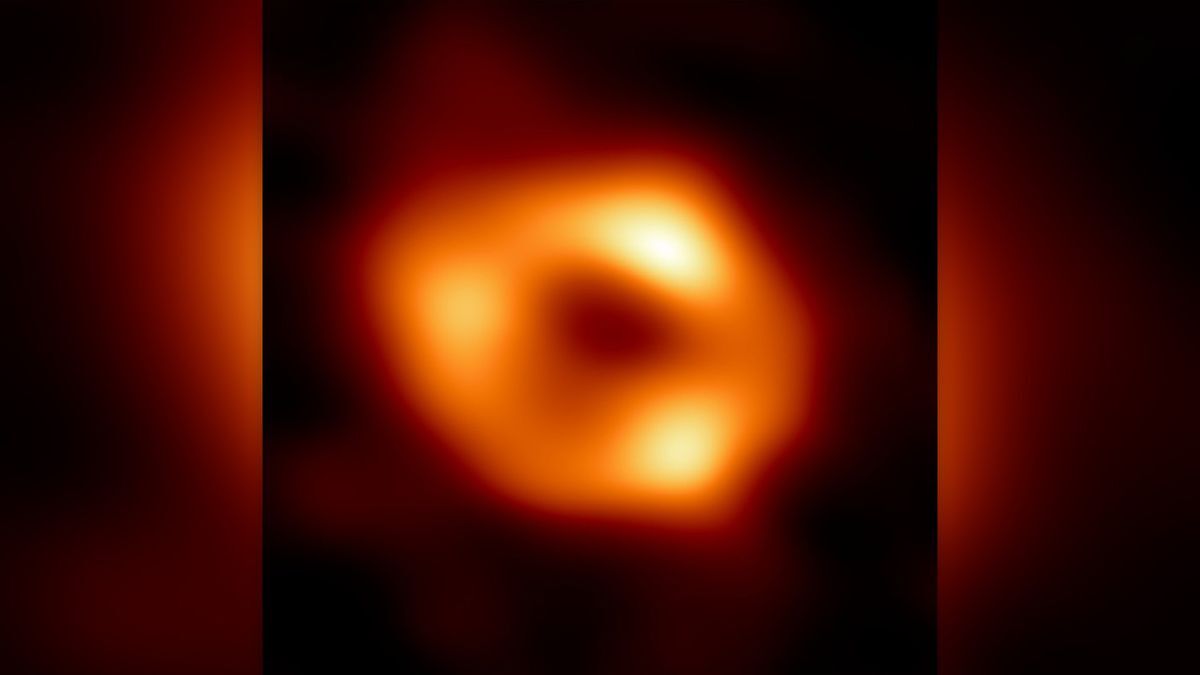Can it hit the speed of light? And what even happen if it does?
No, I don’t believe so. See quote below, emphasis mine.
The spin speed of a black hole is defined as “a” and given a value from 0 to 1, with 1 being the maximum rotational speed to a particular black hole, which is a significant fraction of the speed of light. Ruth A. Daly, a physicist at Penn State, and colleagues found that the rotational speed of Sgr A* is between 0.84 and 0.96 — close to the top limit defined by a black hole’s width. The team described Sgr A*'s blistering speed in a study published Oct. 21 in the journal Monthly Notices of the Royal Astronomical Society.
Ye I read that but the title seemed to imply it is continuing to get faster
it can continue to get faster but would not reach the speed of light. energy needed to accelerate it further reaches infinity as its speed approaches the speed of light. so it can get arbitrarily close to that speed, without ever reaching it.
I don’t get this. I didn’t think you’d need more energy to accelerate from 0-10 km/h than from 10-20. It’s the same delta-V, right? I’m missing something, I feel.
That is correct only at non-relativistic speeds. You can read about special relativity on Wikipedia or something to get a better idea. To summarize: scientists tried to measure the speed of light. While at it, they measured the speed of light when moving really fast towards and away from the source. They found out it did not change no matter how fast you travel. So they rewrote coordinate transformations such that (condition 1) it kept the speed of light constant no matter the speed of your frame of reference and (condition 2) it approached the Newtonian (Galilean for the pedantic) coordinate transformation as your speed approaches zero.
When I say coordinate transformation you can think of an object moving at a speed of, for example, 100 m/s and an observer is moving at 50 m/s in the same direction. the observer sees the object moving at 100 - 50 = 50 m/s. If the observer moves in th4e opposite direction than relative to the observer, the object seems to move at 100 + 50 = 150 m/s. But according to the experiments, if something moves at the speed of light, no matter the speed of the observer, they will seem to move at the speed of light. so simple addition/subtraction will not work.
If you do the math and find a transformation that satisfies those 2 conditions you find the Lorentz transformation and it turns out if there is a constant universal speed then space and time must be relative. If you update your definitions of momentum and energy according to this observation you see that as you approach the speed of light, your kinetic energy approaches infinity. Usual Newtonian formula of kinetic energy is invalid at high speeds. I mean really really high speeds, near the speed of light.
As far as we understand today, nothing that has mass can travel at the speed of light because it would require infinite energy to reach that speed.
Yeah that’s what I thought, but black holes are fucking wack so I thought maybe my understanding wasn’t applicable to them things
Black holes have infinite density, so they have a good start on breaking some rules.
That’s not known. Relativity predicts that they shrink to an infinitely dense singularity, but we don’t know that relativity is still applicable in that environment. They could shrink to a small but finite volume, or they could stay at uniform density within the sphere of the event horizon (which would make SMBHs less dense than water), or space could just stop at the event horizon and there wouldn’t even be an inside. And all those possibilities would look identical from the outside.
deleted by creator
I was hoping for this exact gif. 😁
Pretty sure we all go flying outward at that point. Yeet.
Please swallow the entire galaxy… Just let this shit end already.






